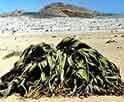Bee vs. Wasp vs. Bumblebee: Key Differences for Easy Identification
Identify Bees, Wasps, and Bumblebees: A Comprehensive Guide
Reading time : 1 minute,
Discovery Chepe Id-780-ECO
Published in
07-08-2025

Photo: (bee) Michael Milverton
It's common to confuse these flying insects, especially when they're buzzing around your garden or picnic. But learning how to distinguish a bee, a wasp, and a bumblebee is not only useful it can help you avoid unnecessary panic and even contribute to environmental awareness.
1- Bees
Bees are best known for their role in pollination and honey production. Their appearance and behavior can help you recognize them.
Body shape and texture: Bees have a chubby, oval-shaped body covered in tiny hairs. These hairs are crucial for collecting pollen.
Color: Typically, bees have a yellow and black striped pattern, but the tones are more muted compared to wasps.
Behavior: Bees are generally gentle and non-aggressive. They are often seen hopping from flower to flower. They only sting when threatened, and most die after stinging once.
Habitat: Bees usually build their hives in hollow trees, walls, or managed beehives. Learn more about their ecological importance on Britannica.

What's the Difference? Understanding Bees, Wasps, and Bumblebees
Photo (Wasp): Wally Holden
2- Wasps
Wasps often get a bad reputation, and for good reason - they're more aggressive and their stings are painful.
Body shape and texture: Wasps have a slender, smooth body with a very narrow waist. Unlike bees, they're not fuzzy.
Color: They usually have bright, shiny black and yellow stripes that serve as a warning.
Behavior: Wasps are predators and scavengers. They can sting multiple times and don't lose their stinger. They're also more likely to show up around food and trash.
Habitat: Their nests are often found under eaves, roofs, or underground. These nests have a papery texture. For safety tips, visit NHS UK.

Photo: (Bumblebee) Symmol
3- Bumblebees
Bumblebees are like the teddy bears of the bee world large, fuzzy, and usually gentle.
Body shape and texture: Their bodies are rounder and much hairier than regular bees. Their size can be quite striking.
Color: They have bold black and yellow bands, and sometimes even orange. Their color is deeper and richer than a honeybee's.
Behavior: Bumblebees are excellent pollinators and not aggressive. They may buzz loudly when flying, and their sting, though rare, can be painful -but they can sting more than once.
Habitat: Bumblebees usually nest in the ground or in piles of leaves. Their colonies are much smaller than those of honeybees. Read more about them at Bumblebee Conservation Trust.
How to Quickly Tell Them Apart
a) If it looks fluffy and fat: It's likely a bumblebee.
b) If it's thin with a narrow waist and shiny: That's probably a wasp.
c) If it's fuzzy and medium-sized, calmly visiting flowers: Most likely a regular bee.
Why It Matters
Recognizing these insects can help you avoid unnecessary fear. While wasps can be dangerous, bees and bumblebees play a crucial role in pollination and food production. Knowing the difference can also help you protect the right species.
So next time you see something buzzing around, take a moment to observe - not all stingers are created equal.
Stay safe, be aware, and remember: understanding nature is the first step toward protecting it.
See Also
Discovery Chepe
Most read...















